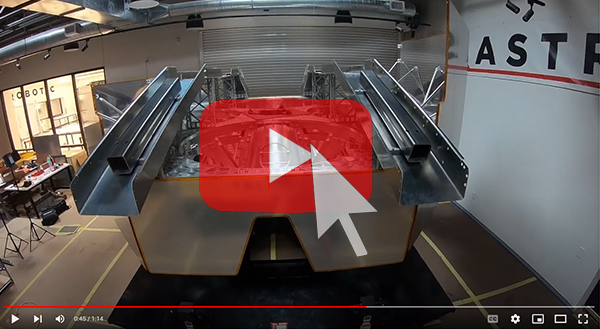21.02.2022

With this major milestone complete, the Structural Test Model for the largest lunar lander since the Apollo Lunar Module is now headed for environmental testing.
Astrobotic’s second lunar lander mission, Griffin Mission One (GM1), has completed a major milestone toward flight by completing its Griffin Structural Test Model (STM). This full-scale model will undergo a series of rigorous tests to inform the final flight build of the Griffin lunar lander, scheduled to begin this year.
Comparable to the weight of an elephant, the fully loaded Griffin STM clocks in at more than 13,000 lbs, and is the largest lunar lander since Apollo’s Lunar Module. The STM is a vital tool to ensure the Griffin lander can survive the harsh environments of launch. First, the STM will undergo static, then acoustic, and vibration testing at specialized facilities off-site.
“The STM’s deck was hollowed out from a single 12ftx12ft aluminum sheet and has more than 2,500 bolts securing the primary structure alone. We constructed the STM as a pathfinder activity, allowing us to try out the tools, equipment, and processes before spaceflight,” says Brandon Schoonmaker, Mechanical Systems Lead at Astrobotic.
Following this environmental test campaign, the Griffin model will be shipped to NASA’s Glenn Research Center in Cleveland to perform a final set of egress test sequences with a prototype of its cargo –NASA’s water-hunting Volatiles Investigating Polar Exploration Rover, or VIPER. These tests will verify VIPER can successfully deploy to the lunar surface from Griffin’s sizable ramps. It will also present an opportunity for rover operators to practice operating in tandem with Griffin.
After launching into space aboard a SpaceX Falcon Heavy rocket, Griffin will deliver VIPER to the lunar surface in late 2023 as part of NASA’s Commercial Lunar Payload Services (CLPS), under the umbrella of the Artemis program. “With the completion of this major milestone, Griffin is one step closer to serving as America’s workhorse lander for lunar cargo,” said Astrobotic CEO, John Thornton.
Quelle: ASTROBOTIC TECHNOLOGY

